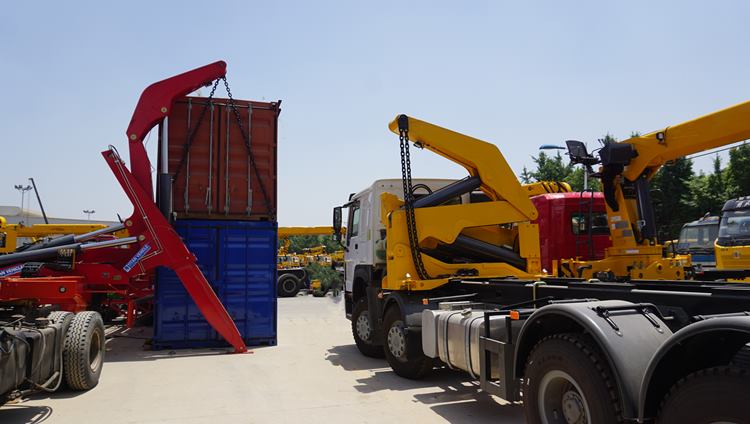Customs clearance, paperwork, preparation of packing lists and bills of lading are important parts of the shipping process. The same is true for properly marking goods and loading containers. As the shipper, you are responsible for packing or loading the container.
This is the most important thing to pay attention to when loading the container.

Container Sealing
There are more misunderstandings about container seals and seal numbers than you might think. The seal is the responsibility of the shipper. You can ask the truck driver or the transportation company to provide the seal, but ultimately it is up to the shipper to ensure that the seal number is correctly indicated in all applicable documents.
Incorrect stamp numbers may cause problems with customs clearance at the destination. In turn, this may result in additional costs, including delay fees. A good idea is to make sure you write down the stamp number and take a photo of it. Upon completion, inform your freight forwarder of the seal number and make sure it is correctly listed on the bill of lading. If the numbers do not match, please contact your shipping company immediately and inform them of this situation.

Container Loading for Sale in Cayman Islands
Time
In terms of time, many factors are involved when arranging the loading date and time. Some things to remember include the distance to the port. When the driver picks up the container, he should make sure that it can be returned to the port before closing the container and determine the loading time. If this is not the case, you may incur additional costs due to having to store the container overnight, using the chassis for an extra few days, and additional trucks from the truck company airport to the port.
Weight
Ensure that the weight of your cargo is evenly distributed on the floor of the container. If the weight of your cargo is unevenly concentrated, make sure to spread the weight on the container floor. If the weight on one shaft is too high, a container that is heavier on one side and lighter on the other may experience weight problems. This also makes handling in ports more difficult and sometimes dangerous.
Please be careful not to exceed the maximum container payload. Generally, for a 20-foot drying container, the maximum total mass of a container is 24,000 kg (52,900 lbs), and for a 40-foot drying container, the maximum total mass of the container is 30,480 kg (67,200 lbs).
You can find the weight of each container on the right door. Note, however, that this weight limit is usually much higher than the weight limit allowed on the road. That is, if you are loading heavy containers, be sure to check local regulations.

Capacity
When choosing FCL transportation, it is recommended to use the entire space of the container. This means going from corner to corner, from wall to wall. If you do not have enough cargo to cover, please fill in the blanks with dunnage.
Like weight, you also want to spread the goods evenly. Do not keep the goods stacked on top of the back half of the container, but spread them all on the floor of the front half. If in doubt, consider Tetris!

Cargo Packaging
Almost all cargo damage in full containers is caused by insufficient packaging or incorrect stowage. Stowage is more than just putting as many goods there as possible. It is important to distribute the weight correctly.
Some factors to consider include the weight, size and type of cargo. In principle, do not put wet goods on top of dry goods, otherwise the dry goods may be damaged. In addition, do not place heavy objects on lighter goods to prevent crushing.
Secure the goods safely by packing the container as tightly as possible. If litter is used, all obstructions, supports and packaging materials must be heat treated in accordance with the regulations of the destination country. You can also use straps to secure the goods in place. Be careful not to apply pressure directly to the container door. If necessary, use fences or gates to avoid stress.
Through this videos, you can learn about different types of sidelifter trailers,including 20ft self loader truck, 20ft sidelifter and 40ft container side loader trailer, as well as the process, testing, packaging and customer feedback, etc.
Welcome to click " TITAN side lifter trailer " to get more videos on Youtube.